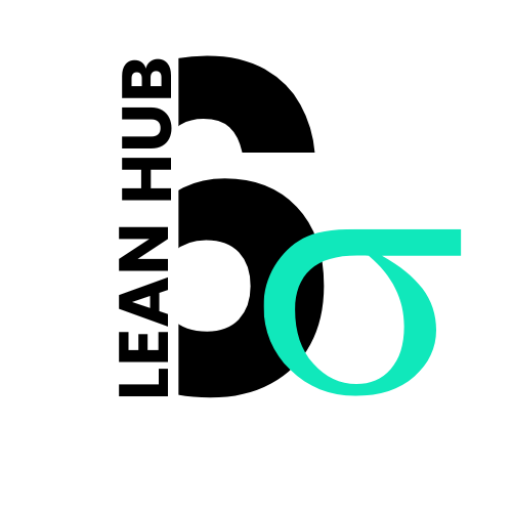Kaizen: Cultivating a Culture of Continuous Improvement
Kaizen, a Japanese term meaning “continuous improvement,” embodies a philosophy that emphasizes the incremental enhancement of processes, products, and services. This concept is rooted in the belief that small, consistent changes can lead to significant improvements over time. As we delve into the essence of Kaizen, we recognize that it is not merely a set of tools or techniques but a mindset that encourages everyone in an organization to contribute to improvement efforts.
By fostering an environment where employees feel empowered to suggest changes, we can cultivate a culture of innovation and efficiency. At its core, Kaizen is about collaboration and teamwork. It encourages us to break down silos and work together towards common goals.
This approach not only enhances productivity but also boosts morale, as employees see their contributions valued and recognized. By understanding Kaizen as a holistic philosophy rather than a series of isolated initiatives, we can better appreciate its potential to transform our workplaces into dynamic environments where continuous improvement is the norm.
Key Takeaways
- Kaizen is a Japanese business philosophy that focuses on continuous improvement and involves everyone in the organization.
- Implementing Kaizen in the workplace requires a culture of open communication, employee involvement, and a focus on small, incremental changes.
- The benefits of Kaizen include increased productivity, improved quality, reduced waste, and higher employee morale.
- Overcoming challenges in Kaizen implementation involves addressing resistance to change, lack of employee engagement, and the need for ongoing training and support.
- Leadership plays a crucial role in Kaizen by setting the vision, providing resources, and empowering employees to drive continuous improvement.
Implementing Kaizen in the Workplace:
When we consider implementing Kaizen in our workplace, we must first assess our current processes and identify areas ripe for improvement. This initial step involves gathering input from employees at all levels, as they often possess valuable insights into inefficiencies and potential enhancements. By engaging our team in this discovery phase, we not only gain a clearer understanding of the challenges we face but also foster a sense of ownership among employees regarding the changes that will follow.
Once we have identified key areas for improvement, we can begin to implement specific Kaizen practices. This might involve organizing regular brainstorming sessions or workshops where team members can propose ideas for enhancing workflows. Additionally, we can establish cross-functional teams tasked with addressing particular issues, ensuring that diverse perspectives are considered in the problem-solving process.
As we move forward with these initiatives, it is crucial to maintain open lines of communication and provide ongoing support to our teams, reinforcing the idea that Kaizen is an ongoing journey rather than a one-time event.
The Benefits of Kaizen:
The benefits of adopting a Kaizen approach in our organizations are manifold. One of the most significant advantages is the enhancement of operational efficiency. By continuously identifying and eliminating wasteful practices, we can streamline our processes, reduce costs, and ultimately improve our bottom line.
This focus on efficiency not only benefits the organization but also allows us to deliver greater value to our customers, fostering loyalty and satisfaction. Moreover, embracing Kaizen cultivates a culture of innovation within our teams.
As employees become accustomed to seeking out opportunities for improvement, they are more likely to think creatively and propose novel solutions to challenges.
This proactive mindset can lead to breakthroughs that drive our organization forward. Additionally, as we implement Kaizen practices, we often see an increase in employee engagement and morale. When team members feel their voices are heard and their contributions matter, they are more likely to be motivated and committed to their work.
Overcoming Challenges in Kaizen Implementation:
| Challenges | Metrics |
|---|---|
| Lack of Employee Engagement | Employee participation rate in improvement activities |
| Resistance to Change | Number of change management workshops conducted |
| Communication Breakdown | Frequency of communication between management and employees |
| Resource Constraints | Percentage of budget allocated to Kaizen projects |
While the benefits of Kaizen are clear, we must also acknowledge the challenges that can arise during its implementation. One common obstacle is resistance to change. Many employees may feel apprehensive about altering established routines or fear that their roles may be threatened by new processes.
To address this resistance, it is essential for us to communicate the purpose and benefits of Kaizen clearly. By involving employees in the change process and providing them with the necessary training and resources, we can help alleviate their concerns and foster a more receptive attitude towards improvement initiatives. Another challenge we may encounter is the potential for short-term thinking.
In our fast-paced work environments, it can be tempting to prioritize immediate results over long-term gains.
However, Kaizen is fundamentally about sustained improvement over time. To combat this tendency, we should establish clear metrics for success and celebrate small wins along the way.
By recognizing progress, no matter how incremental, we reinforce the value of continuous improvement and encourage our teams to stay committed to the Kaizen journey.
The Role of Leadership in Kaizen:
Leadership plays a pivotal role in the successful implementation of Kaizen within our organizations. As leaders, we must model the behaviors and attitudes that align with the principles of continuous improvement. This means actively participating in Kaizen initiatives, demonstrating a willingness to listen to feedback, and being open to change ourselves.
When employees see their leaders embracing Kaizen wholeheartedly, they are more likely to follow suit. Furthermore, it is our responsibility as leaders to create an environment that supports experimentation and learning from failure. We should encourage our teams to take calculated risks and view setbacks as opportunities for growth rather than reasons for punishment.
By fostering a culture where innovation is celebrated and mistakes are seen as part of the learning process, we empower our employees to engage fully in Kaizen efforts and contribute meaningfully to our organization’s evolution.
Creating a Kaizen Mindset:
To truly embed Kaizen into our organizational culture, we must cultivate a mindset that values continuous improvement at every level. This begins with education and training; we should provide resources that help employees understand the principles of Kaizen and how they can apply them in their daily work. Workshops, seminars, and hands-on training sessions can be effective ways to instill this mindset across our teams.
Additionally, we should encourage a spirit of curiosity and inquiry among our employees. By promoting an environment where questions are welcomed and exploration is encouraged, we can inspire team members to seek out inefficiencies and propose solutions proactively. This mindset shift requires ongoing reinforcement; regular discussions about improvement opportunities and recognition of those who contribute ideas can help solidify Kaizen as a core value within our organization.
Kaizen Tools and Techniques:
As we embark on our Kaizen journey, it is essential to familiarize ourselves with various tools and techniques that can facilitate continuous improvement efforts. One widely used method is the Plan-Do-Check-Act (PDCA) cycle, which provides a structured approach for testing changes on a small scale before implementing them more broadly. By following this iterative process, we can refine our ideas based on real-world feedback and ensure that changes are effective before full-scale adoption.
Another valuable tool is value stream mapping, which allows us to visualize our processes and identify areas where waste occurs. By mapping out each step in a workflow, we can pinpoint bottlenecks or redundancies that hinder efficiency. Additionally, techniques such as 5S (Sort, Set in order, Shine, Standardize, Sustain) help us create organized workspaces that promote productivity and safety.
By leveraging these tools effectively, we can enhance our Kaizen initiatives and drive meaningful improvements throughout our organization.
Sustaining Kaizen for Long-Term Success:
To ensure that our commitment to Kaizen endures over time, we must establish mechanisms for sustaining continuous improvement efforts within our organizations. This begins with integrating Kaizen principles into our strategic planning processes. By aligning our long-term goals with a focus on continuous improvement, we signal to all employees that Kaizen is not just a passing trend but a fundamental aspect of our organizational identity.
Regularly reviewing progress and celebrating achievements is also crucial for sustaining momentum. We should establish key performance indicators (KPIs) related to our improvement initiatives and track them consistently. By sharing successes with the entire organization—whether through newsletters, meetings, or recognition programs—we reinforce the importance of Kaizen and motivate employees to remain engaged in ongoing improvement efforts.
In conclusion, embracing Kaizen as a philosophy of continuous improvement offers us an opportunity to transform our workplaces into dynamic environments where innovation thrives. By understanding its principles, implementing effective practices, overcoming challenges, fostering leadership support, cultivating a mindset of curiosity, utilizing appropriate tools, and sustaining our commitment over time, we can create organizations that not only adapt to change but also drive it forward. Through collective effort and dedication to continuous improvement, we can achieve remarkable results that benefit both our teams and our customers alike.
FAQs
What is Kaizen?
Kaizen is a Japanese business philosophy that focuses on continuous improvement in all aspects of an organization. It involves making small, incremental changes to processes, products, or services to improve efficiency and quality.
How does Kaizen work?
Kaizen works by encouraging every employee, from the top management to the front-line workers, to contribute to the process of continuous improvement. It fosters a culture of problem-solving and empowers employees to identify and implement small-scale improvements in their work areas.
What are the benefits of Kaizen?
The benefits of Kaizen include increased efficiency, improved quality, reduced waste, higher employee engagement, and a culture of continuous improvement. Over time, the compounding effect of small improvements can lead to significant gains in productivity and profitability.
How does Kaizen foster a culture of problem-solving?
Kaizen fosters a culture of problem-solving by encouraging employees to identify and address issues in their work areas. It promotes open communication, collaboration, and a willingness to experiment with new ideas and solutions.
How can every employee contribute to the process of Kaizen?
Every employee can contribute to the process of Kaizen by actively participating in identifying opportunities for improvement, suggesting and implementing small-scale changes, and sharing their knowledge and expertise with their colleagues. Kaizen emphasizes the importance of continuous learning and improvement for all employees.






